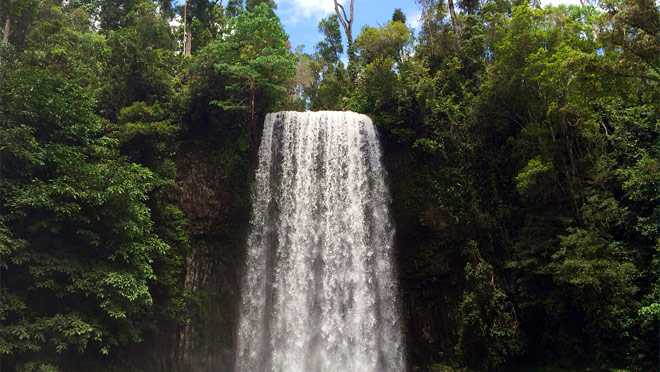Trip to Australia yields some great summer cooling tips

Window coverings and ceiling fans key to keeping cool
Posted by Jacqueline Lambert
As someone who doesn't fare well in heat, I don't usually look forward to the arrival of summer and the weather becoming hotter and more humid. But this year, I got a head start on getting acclimatized to summer sun, after spending two and a half weeks in Australia with my parents, during the southern hemisphere summer.
We spent most of our time in northern Australia, in Port Douglas and Noosa. At times the humidity was much more than I could handle.
In Noosa we were able to stay cool by spending a lot of time in the water. The waves were huge and after hikes through the national park, it was fun to cool down by playing in the ocean. In Port Douglas, we didn't have that option. I was travelling during stinger season, so we stayed out of the water as jellyfish were common close to shore.
The Australian condos that we stayed in were well-equipped for helping us deal with the hot temperatures. The windows in Noosa were covered with thick drapes and blinds, and every window and door was equipped with a screen.
During the day, we made sure to close the curtains and blinds over windows to keep heat out. At night, when we finished exploring for the day, we would open up the windows and get the air circulating through all the rooms. I'm planning to adopt this plan in my own apartment this summer — if it can beat the Australian heat, I figure it can certainly help here in Vancouver.
Each room also had a ceiling fan which helped us circulate the air throughout the living area. Ceiling fans are really efficient and when they rotate in a counter-clockwise direction, the airflow creates a wind-chill effect.
Having a fan in each room made it a bit easier for my family to keep our cool. We mostly used them when we were in the condo; ceiling fans make you feel cooler, but don't adjust the temperature of the room.
Day-vs.-night air conditioning strategy cools only the rooms you use
Port Douglas is further north, much hotter, and more humid then Noosa. Cooling down in the ocean wasn't an option for us, besides the day we spent snorkelling on the Great Barrier Reef, wearing our protective stinger suits.
During a road trip through the Atherton Tablelands we found people keeping cool by swimming in crater lakes and waterfalls.
Once we arrived in Port Douglas, we had to rely more on air conditioning to maintain a comfortable temperature indoors. But I found that air conditioning was used more efficiently in Australia than I'm used to seeing at home in Canada.
The air conditioner that was installed in our condo had two different settings — day and night. The day mode kept the living room and kitchen cool, while the night setting directed cold air to only the bedrooms, keeping us cool while we slept.
I thought this was such an innovative idea and a smart way to make sure people only cool down the space they are using. That's a great tip no matter which cooling method you use. For example, only turn on ceiling fans and portable fans in the room you're sitting in to save energy.
At the end of my trip I spent a few days in Sydney visiting a friend. She keeps her home cool by reducing the amount of heat generated in the first place. She and her roommates grill meals outdoors as often as possible, rather than using her stove or oven, and she doesn't even own a dryer, opting to hang her clothes to dry.
Check out more Power Smart tips on using small appliances to reduce heat in the kitchen
The 'key' to everyday electricity savings
One of the most interesting energy saving tricks in Australia was that most condos required a key to use the electricity. We would leave our hotel key in the slot to turn on the lights, watch TV, use the microwave, and charge our mobile devices.
When we would leave for the day, we would take the key out of the slot, and all the lights would turn off, and the outlets would cut power. It's an amazing way for a hotel to save electricity, and to ensure guests aren't wasting power.
Australians also don't need to worry too much about phantom power; every outlet comes equipped with a switch, making it easy to cut standby power.
With our own summer fast approaching, I'm looking forward to using some of the ideas I picked up in Australia. My small apartment gets way too hot, but the first thing I'm going to do this season is invest in some drapes to block out the sun.
If that doesn't work, I'll head to the water, just like the Australians do.
Jacqueline Lambert is a member of BC Hydro's digital communications team.